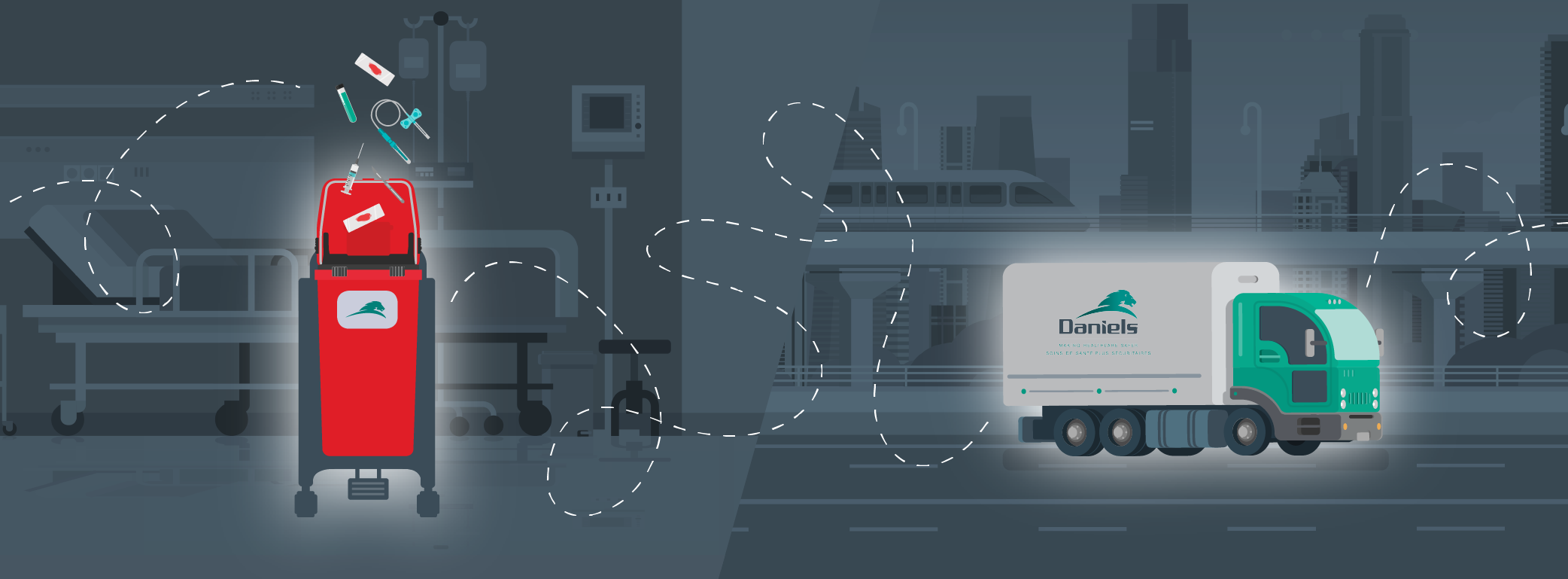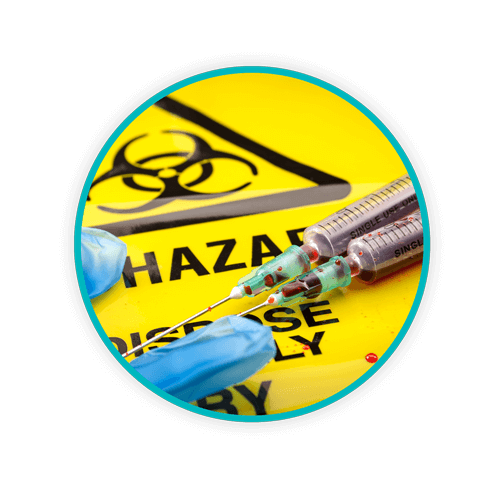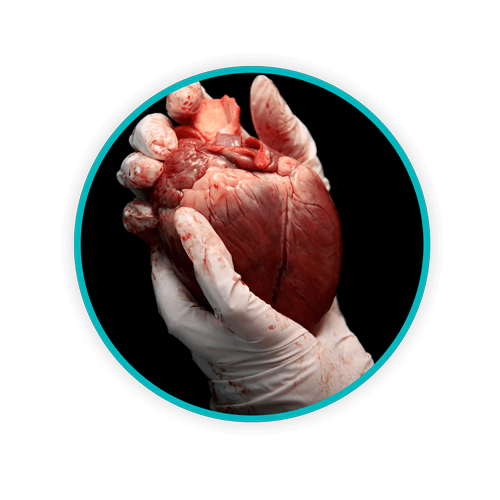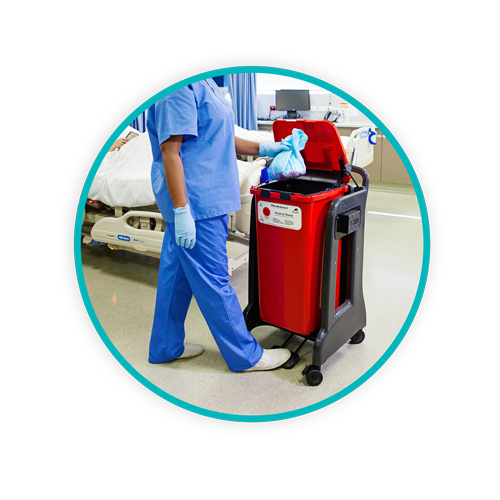Where Does Biohazardous Waste Go? Decoding Medical Waste Streams

Biohazardous waste, also referred to as regulated medical waste (RMW), biomedical waste, or infectious waste, encompasses any liquid or solid waste contaminated with blood, human body fluids, or other materials capable of spreading infections. Proper management of biohazardous waste is crucial for protecting public health and the environment. But where does biohazardous waste go after it is properly disposed of? And what are the regulatory requirements that govern its management? In this article, we will provide comprehensive answers to these questions and more.
TOPICS WE WILL COVER
1 / What is Biohazardous Waste?
2 / Regulatory Framework for Biohazardous Waste Disposal
3 / How is Biohazard Waste Disposed Of?
4 / What Happens to Biohazard Waste?
5 / What Do Healthcare Professionals Do with Biohazard Waste?
6 / How is Biohazardous Waste Removed from the Patient's Room?
7 / Innovative Solutions in Biohazardous Waste Management | The Daniels Difference
8 / Partner With Daniels For Compliant Medical Waste Management Today
What is Biohazardous Waste?
Biohazardous waste, also known as infectious waste or biomedical waste, refers to solid or liquid wastes that may contain potentially infectious substances.
The Centers for Disease Control and Prevention (CDC) defines biohazardous waste as waste that is significantly capable of causing infection during its handling and disposal.
This category includes:
- Anatomical Waste: Anatomical waste refers to solid biological waste containing identifiable human materials, such as amputated limbs.
- Sharps Waste: Syringes, hypodermic needles, acupuncture needles, scalpels, and other items capable of puncturing the skin.
- Pathological Waste: Examples of pathological waste include biopsy samples, bodily fluids, human tissues, and other biological materials.
-
Laboratory Waste: Cultures, stocks of infectious agents, and specimen cultures.
If not properly handled and disposed of, these infectious materials pose significant risks to human health and the environment. Healthcare facilities, laboratories, and other institutions generating biohazardous waste must adhere to strict guidelines for its management and disposal.
Regulatory Framework for Biohazardous Waste Disposal
The management of biohazardous waste is governed by various state and federal regulations to ensure safe handling and disposal. Key regulatory bodies include:
- Environmental Protection Agency (EPA)
- Occupational Safety and Health Administration (OSHA)
-
Department of Transportation (DOT)
OSHA's Bloodborne Pathogens Standard sets requirements for protecting workers from exposure to bloodborne pathogens. The DOT regulates the transportation of hazardous materials, including biohazardous waste, to ensure safe transport on public roads.
Healthcare facilities must comply with state and federal regulations to maintain safety standards and avoid penalties. Regular education, training and audits are essential to ensure ongoing compliance.
How is Biohazard Waste Disposed Of?
 The disposal of biohazardous waste involves several critical steps:
The disposal of biohazardous waste involves several critical steps:
Segregation and containment:
Waste is separated into appropriate color-coded and labeled containers, such as sharps containers and biohazard bins. This segregation is crucial for proper handling and treatment.
Transportation:
Secure and compliant transport methods, with proper documentation and tracking, ensure that waste is safely moved from the point of generation to off-site treatment facilities.
Common methods of treatment:
- Autoclaving: High-pressure steam sterilization that effectively kills pathogens
- Incineration: Burning waste at high temperatures in a medical waste incinerator, reducing it to ash
-
Chemical treatment: Using disinfectants to neutralize pathogens
These treatment methods ensure that the waste is rendered safe before final disposal, minimizing risks to public health and the environment.
What Happens to Biohazard Waste?
So, where does biohazardous waste go when properly segregated, treated and disposed of?
The journey of biohazardous waste from collection to final disposal involves several stages:
- Collection at the point of generation in healthcare facilities or laboratories
- Interim storage and internal transport within the facility
- External transport to treatment facilities by licensed waste haulers
-
Final treatment and disposal at specialized facilities
This process aims to reduce infection risk and minimize environmental contamination. Each step is carefully monitored and documented to ensure compliance with regulations and maintain safety standards.
What Do Healthcare Professionals Do with Biohazard Waste?
Healthcare professionals play a crucial role in the proper management of biohazardous waste. Their responsibilities include:
- Correctly identifying and segregating waste at the point of generation
- Using appropriate containers for disposal, such as sharps containers for needles
- Following protocols for safe handling and transport within the facility
-
Maintaining accurate records of waste generation and disposal
Treatment and disposal facilities, including hospitals and specialized healthcare waste treatment plants, handle the final stages of waste management. These facilities use advanced technologies to treat the waste and render it safe for final disposal. Regulatory bodies ensure compliance through regular inspections and may impose penalties for non-compliance. This oversight helps maintain high standards of safety and environmental protection.
How Is Biohazardous Waste Removed from the Patient's Room?
In healthcare settings, specific procedures are followed for removing biohazardous waste from patient rooms:
- Immediate disposal in appropriate containers to minimize exposure risks
- Use of hands-free solutions like touchless biohazard waste bins to reduce cross-contamination
- Protocols for safe removal and transport, minimizing handling and exposure
-
Proper labeling and documentation to ensure proper treatment
These procedures ensure the safety of healthcare workers and patients while maintaining compliance with regulations. Regular training and updates to protocols help maintain best practices in waste management.
Innovative Solutions in Biohazardous Waste Management | The Daniels Difference
Daniels Health is a leading provider of biomedical waste disposal solutions, offering comprehensive waste management services for both acute and non-acute care facilities. Our focus on safety, compliance and cost-effectiveness ensures healthcare facilities can manage waste efficiently and sustainably.
Key Services:
-
Custom-Designed Containment Systems: We offer innovative containment solutions, such as the Medismart system, which features touchless disposal and robotic sanitization.

- Waste Movement Audits and Traceability: We conduct thorough audits to optimize waste movement within facilities and ensure complete traceability from waste generation to disposal.
- Staff Training: We provide training programs to educate healthcare workers classed as medical waste generators on proper waste handling and disposal practices.
- Storage Optimization: We assist facilities in optimizing storage solutions to ensure safe and efficient waste management.
Innovations in Biomedical Waste Disposal
Daniels Health has introduced several key innovations in biomedical waste management. One of the most notable is the Medismart system, a bagless solution designed for handling regulated medical waste. Key features include:
- Touchless Disposal: Minimizes the risk of contamination and infection.
- Robotic Sanitization: Guarantees thorough cleaning and disinfection of waste containers.
-
Sustainability Benefits: Designed to reduce environmental impact by eliminating disposable bags and promoting the use of reusable containers.
Another significant innovation is the Sharpsmart system, which offers a comprehensive approach to sharps waste management. These sharps containers include features such as:
- Hands-Free Disposal: This means our sharps containers reduce the risk of needlestick injuries and cross-contamination.
- Overfill Protection: Prevents overfilling, ensuring safe disposal of sharps.
- Reusable, Rigid, Puncture-Resistant Containers: Cuts down on plastic waste and supports environmental sustainability.
-
Robotic Cleaning: Maintains high hygiene standards and lowers bacterial load.
Partner With Daniels For Compliant Medical Waste Management Today
Proper management of biohazardous waste is essential for protecting public health and the environment. By understanding the journey of this waste from generation to disposal and following regulatory guidelines, healthcare facilities can ensure safe and compliant waste management practices.
Key takeaways include:
- The importance of proper segregation and containment at the point of generation
- The need for compliance with federal and state regulations
- The various treatment methods available for rendering biohazardous waste safe
-
The crucial role of healthcare professionals in the waste management process
Now that you're well-versed in where biohazard waste goes when properly segregated and disposed of, it's time to consider your next steps.
